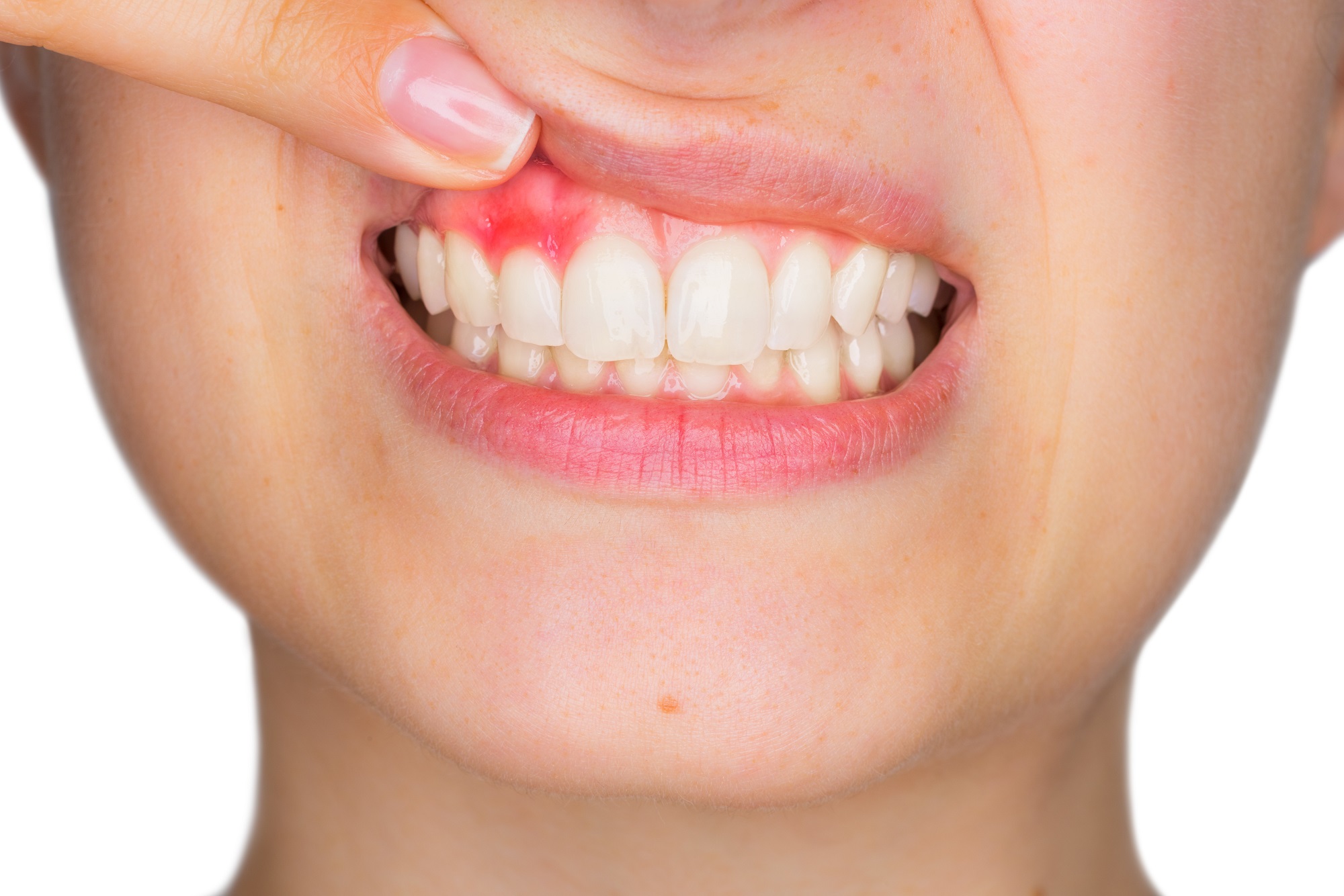What is gingivitis? (Tooth Gum Disease)
Gingivitis is an inflammation of the gums, usually caused by a bacterial infection. If left untreated, it can become a more serious infection known as periodontitis.
Gingivitis and periodontitis are major causes of tooth loss in adults, according to the American Dental Association. Dental infections can add up, with both your health and your wallet at stake.
According to the Centers for Medicare & Medicaid Services, Americans spent an estimated $129 billion on dental services in 2017.
Your gums actually attach to the teeth at a lower point than the gum edges that we see. This forms a small space called a sulcus. Food and plaque can get trapped in this space and cause a gum infection or gingivitis.
Plaque is a thin film of bacteria. It constantly forms on the surface of your teeth. As plaque advances, it hardens and becomes tartar. You can develop an infection when plaque extends below the gum line.
Left unchecked, gingivitis can cause the gums to separate from the teeth. This can cause injury to the soft tissue and bone supporting the teeth. The tooth may become loose and unstable. If infection progresses, you may ultimately lose your tooth or need a dentist to remove it.
The following are risk factors for gingivitis and periodontitis:
- smoking or chewing tobacco
- diabetes
- consuming certain medications such as oral contraceptives, steroids, anticonvulsants, calcium channel blockers, and chemotherapy
- crooked teeth
- dental appliances that fit poorly
- broken fillings
- pregnancy
- genetic factors
- compromised immunity such as with HIV/AIDS
Many people aren’t aware that they have gum disease. It’s possible to have gum disease without any symptoms. However, the following can be symptoms of gum disease:
- gums that are red, tender, or swollen
- gums that bleed when you brush or floss your teeth
- gums that have pulled away from the teeth
- loose teeth
- a change in how your teeth fit together when you bite (malocclusion)
- pus between teeth and gums
- pain when chewing
- sensitive teeth
- partial dentures that no longer fit
- foul-smelling breath that doesn’t go away after you brush your teeth
During a dental exam, your gums will be probed with a small ruler. This probing is a way to check for inflammation. It also measures any pockets around your teeth. A normal depth is 1 to 3 millimeters. Your dentist may also order X-rays to check for bone loss.
Talk to your dentist about risk factors for gum disease as well as your symptoms. This can help diagnose your gingivitis. If gingivitis is present, you may be referred to a periodontist. A periodontist is a dentist who specializes in the treatment of gum diseases.
You must practice proper oral hygiene to treat gingivitis. You should also cut back on any smoking, if you smoke, and manage your diabetes. Other treatments include:
- deep cleaning your teeth
- antibiotic medications
- surgery
Cleaning teeth
There are several techniques that can be used to deep clean your teeth without surgery. They all remove plaque and tarter to prevent gum irritation:
- Scaling removes tartar from above and below the gum line.
- Root planing smooths rough spots and removes plaque and tartar from the root surface.
- Lasers may remove tartar with less pain and bleeding than scaling and root planing.
Medications
A number of medications can be used to treat gum disease:
- Steel Bite Pro containing 100% natural solution that you can use to rebuild your gums and teeth starting today.
- A 60 Seconds Dental Trick Before Going to Bed Tonight To Rebuild Your Teeth and Gums And Get Rid of Tooth Decay.
- Timed-release antiseptic chips containing chlorhexidine can be inserted into pockets after root planing.
- Antibiotic microspheres made with minocycline can be inserted into pockets after scaling and planing.
- Oral antibiotics can be used to treat persistent areas of gum inflammation.
- Doxycycline, an antibiotic, can help keep enzymes from causing tooth damage.
- Flap surgery is a procedure where the gums are lifted back while plaque and tartar is removed from deeper pockets. The gums are then sutured in place to fit snugly around the tooth.
- Bone and tissue grafts can be used when teeth and jaw are too damaged to heal.
Surgery
Proper and consistent oral hygiene can prevent gum disease. This includes:
- visiting the dentist regularly
- brushing your teeth twice daily with fluoride toothpaste
- flossing your teeth every day
Eating a balanced diet is also important to achieving and maintaining good dental health.
The
- diabetes
- heart disease
- stroke
- lung disease
It also increases the risk of a woman giving birth to a premature or low birth weight infant.
Although gum disease is associated with these health conditions, it hasn’t been shown to cause them. More research is needed to determine the specifics of this association.
However, Do This 60 Seconds Dental Trick Before Going to Bed Tonight To Rebuild Your Teeth and Gums And Get Rid of Tooth Decay. Users Say It’s Better Than Implants. Click Here To Watch Video.
 Reviewed by Michael Odega
on
August 05, 2022
Rating:
Reviewed by Michael Odega
on
August 05, 2022
Rating:











No comments: